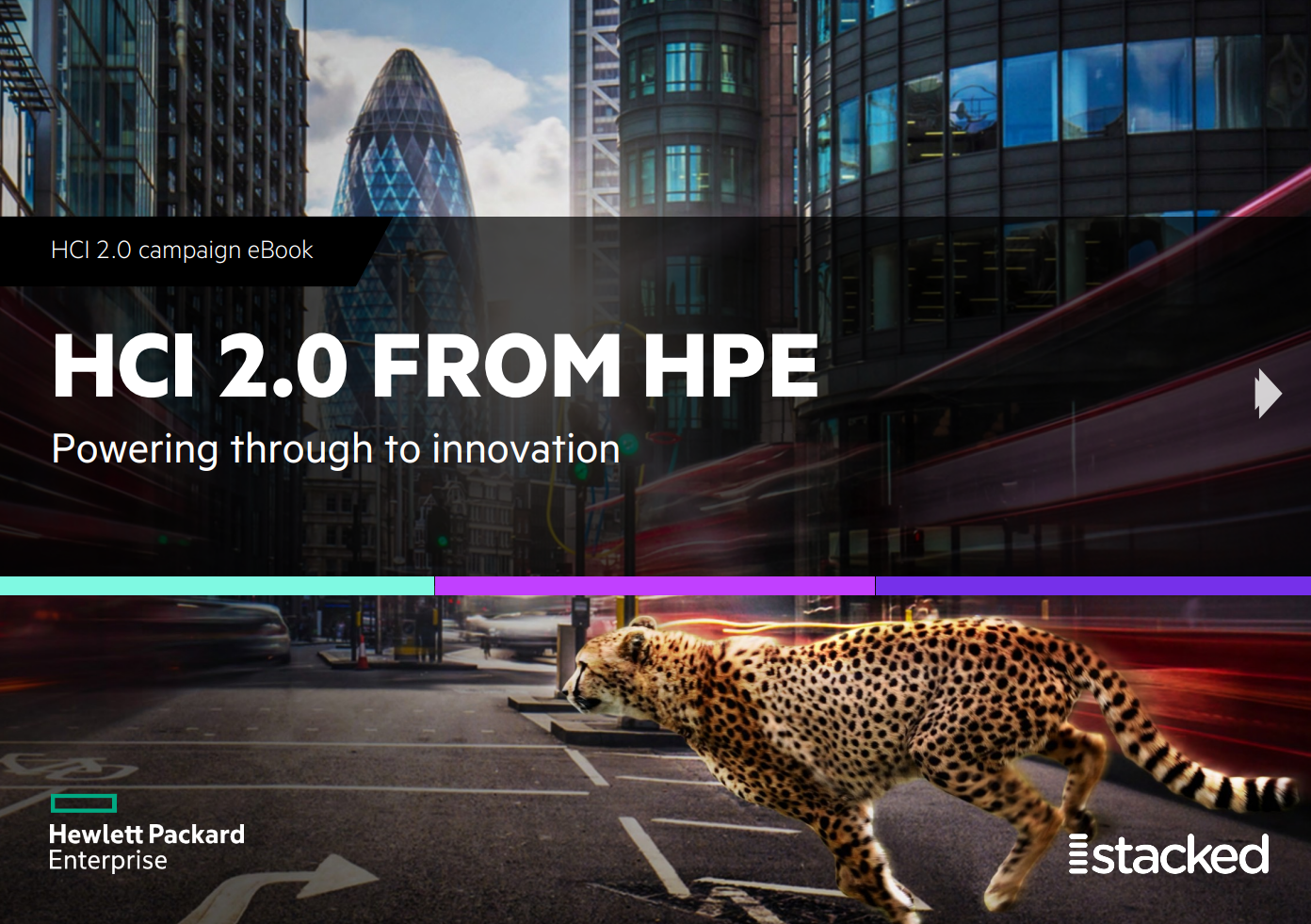Resilience – not cutting-edge technology – is the foundation of smart office buildings
No matter what goes on outside your walls, your smart building ought to have the horsepower to fight anything the world can throw at it

When people talk smart – anything from devices to cities – there are some rich providers of confusion in the mix. My favourite right now is the cloud. Not the one that you and I understand, but the other cloud; the one that's vaguely imagined by great chunks of the regular populace, who, by now. have simply smooshed together all our carefully detailed descriptions.
Their cloud isn’t owned by anybody, costs nothing to use, has perfect resilience and is unfettered by topography or the rule of law. This is a multifaceted misunderstanding, of course, which only comes to light when a failure in the real, messy, multi-owner, connection-constrained cloud lays another bit of the world’s biggest jigsaw open to view.
To an extent, our smart cities are like a cloud. Everything is spread out, but connected; redundancy of the design is assumed rather than baked in.
What looks like all the same network tech is actually a patchwork of owners, operators and users, with strangely mixed expectations about security and segregation. On the one hand, a fleet of smart sensors are meant to be for the public good; on the other hand, the owners of the networks those sensors talk through are not put there for public-benefit projects. This puts the information that they collect out of everyone else’s reach.
And then on the other hand, smart cities are nothing like a cloud at all. Buildings don’t scale up and down at random; overall reliability of the systems supporting the humans (remember them?) has to be higher than the overall observed reliability of the common cloud names and the networks over which they reach us. That’s a lot of moving parts.
Resilience in cloud architectures is like having an army of zombies at your command. It doesn’t matter if a few punters lose their transaction from an outage because another zombie will instantly be along to help. Resilience in smart buildings is more like a superhero. No matter what goes on outside of your walls, your smart building ought to have the local horsepower and IT antibodies to fight almost anything the world can throw at it.
RELATED RESOURCE

Making a massive global network across the globe just to run some local services is becoming the defining sin of the smart building revolution. Yes, of course there are other networks that tick some of the same boxes and use the same jargon, but they’re either non-time-critical or their field of interest isn’t obvious to their human users. And humans must be able to keep on functioning, even when the internet is having a bad day.
Get the ITPro daily newsletter
Sign up today and you will receive a free copy of our Future Focus 2025 report - the leading guidance on AI, cybersecurity and other IT challenges as per 700+ senior executives
This requirement of natural resilience becomes exceptionally sharp when there is a large-scale, global disruption of internet traffic. If you’re going to make quite minor systems “computerised” then it’s no use trying to run them from a data centre halfway round the planet when all you want is to switch on a few of Mission’s smart light fittings.
This is where the more business-focused idea of edge computing comes in. For greybeards like me, this harks back to the old days of strictly local, cloud-independent horsepower. For the more modern generations, though, it’s something of a revelation.
Thus the very gentle introduction I had by Brainbox.ai, which makes artificial intelligence (AI)-cooked building-control systems, aimed at making classic glass-wall skyscraper heating, ventilation, and air conditioning (HVAC) systems better at saving greenhouse gases.
If you have a massive sandstorm coming, and your internet access is above-ground on poles at various points, you both want to do strange things to your building’s systems (to keep the sand damage to a minimum) but without the benefit of internet access.
That requires a lot of “internetising” of any information your building might be able to collect, whether that’s heat from the sun, wind speed, temperature or the amount of rain. And internetising means that you could easily have a rich variety of sensor manufacturers, with an equally rich range of responses to a loss of connection to the rest of the world. Well-behaved sensors hold on to their IP addresses, and don’t worry too much about using public-access DNS to find their way home.
Unfortunately, smart building devices tend towards two extremes: too small and dumb to live on their own and formidably complex. One friend developed and sold a doorbell that booted up much of a Linux kernel, and spoke IPv6 across your LAN to its cloud-based central controller, before putting a picture up on the company intranet of whoever just pushed the button on that funny-looking, oversized entry phone thing. To be resilient against entire-planet internet damage, you must design the entirety of your smart building system to be “unplug friendly” – or at least, to fall back into a failsafe mode that does minimal harm to the building’s human population despite the lack of operating humidity sensors on the east wing.
In fact, if you step back and think about it, you’ll notice that most of the smart city advertising material creates an impression of immediacy. You might see a flashing red box and zoom in to get live video of a crashed milk float, shock horror! In fact, successful smart Internet of Things (IoT) deployments are less time-critical: if your printer’s toner tips into low today, it’s unlikely to run out until a few days’ time.
Moving into more immediate reporting and control, an HVAC system must be able to adjust the flow of air, as buildings respond to the changing conditions of the day, and the constant activity and movement of inhabitants makes that job a lot harder – which, in edge computing terms, means more local decision-making, less cloud backchat, and more responsive control systems.
Which is great, if your building is just modern enough. Not brand new, which means potentially loaded with the wrong kind of smarts by enthusiastic but misguided bricks-and-mortar developers. Not so old that you’re dealing with lead pipes and mouldy thatch, birds’ nests and deathwatch beetles, either.
RELATED RESOURCE

Most of the interest in developing smart buildings is focused in on the building stock from about the 1950s through to the early 2000s; the kind of places where even the first couple of retrofit moves – a smart switch to the fan extractor in the server room, or maybe a CCTV webcam pointing into the parking area – shows enough benefit that a larger investment in this technology looks worthwhile.
Brainbox claims many exciting things about its approach to an edge-deployed cloud device smart monitoring and control server. I’m sure it will find a market that agrees with its assertions, but I’ve already seen several false starts in other, very similar markets, where people frankly turn out to be pretty scrappy building owners and their systems reflect that, being made up of half-a-dozen nasty old boxes running embedded Windows 98 to drive everything from the air handler to the cargo bay lift. Tidying and adding resilience to those kinds of “version 0.7” smart networks is a revenue stream I am, I must freely admit, looking forward to a lot.
-
 Should AI PCs be part of your next hardware refresh?
Should AI PCs be part of your next hardware refresh?AI PCs are fast becoming a business staple and a surefire way to future-proof your business
By Bobby Hellard Published
-
 Westcon-Comstor and Vectra AI launch brace of new channel initiatives
Westcon-Comstor and Vectra AI launch brace of new channel initiativesNews Westcon-Comstor and Vectra AI have announced the launch of two new channel growth initiatives focused on the managed security service provider (MSSP) space and AWS Marketplace.
By Daniel Todd Published